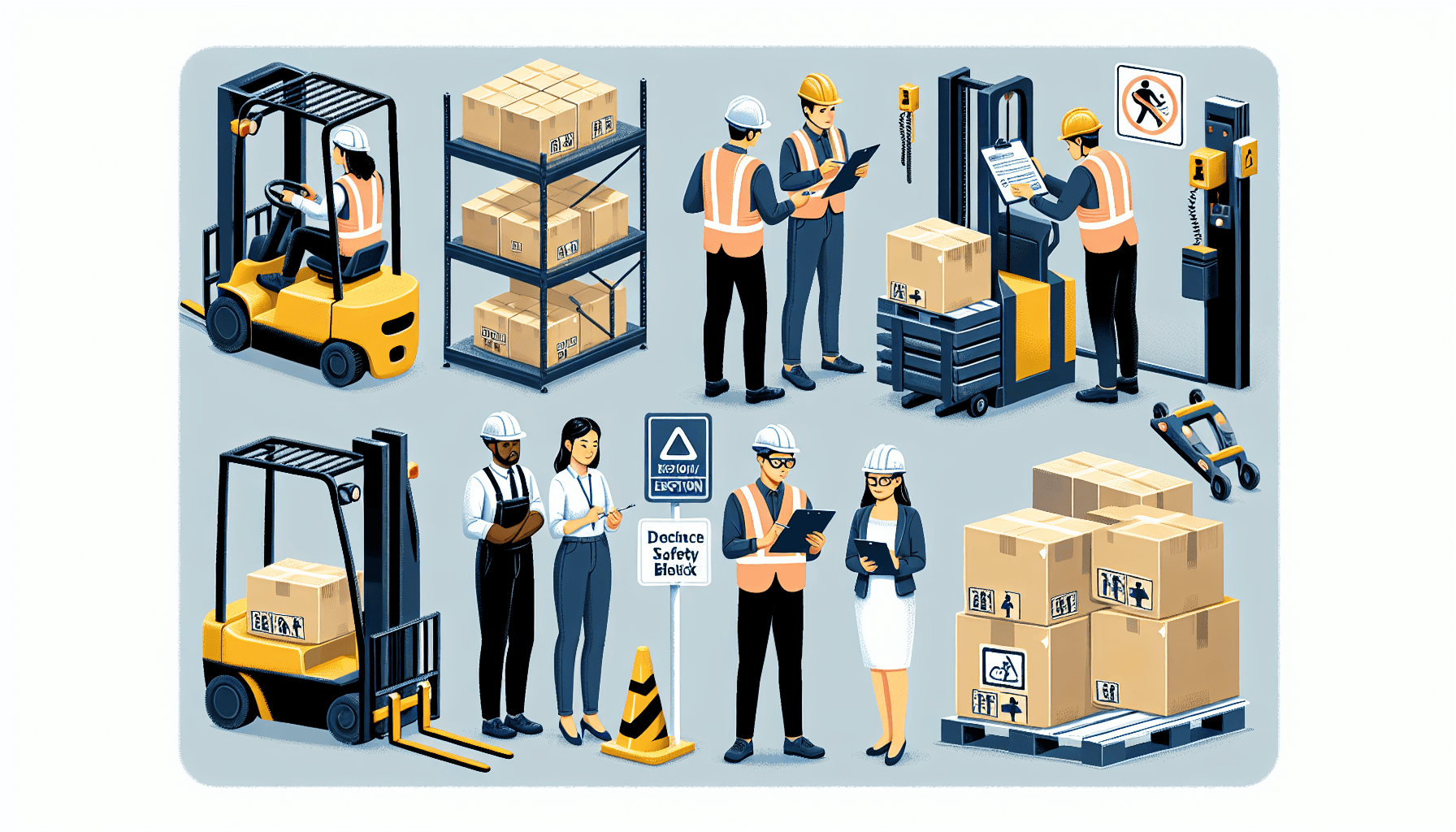Warehouses can be bustling hubs of activity, with workers and machinery moving rapidly to meet production targets. Within this fast-paced environment, it is crucial to prioritize safety to prevent equipment accidents and ensure the well-being of all warehouse employees. Implementing effective safety measures not only safeguards the workforce but also helps to boost productivity and minimize downtime. In this article, we will discuss some essential strategies to prevent equipment accidents in warehouses and create a safe working environment.
1. Regular Equipment Maintenance
One of the key steps in preventing equipment accidents is to prioritize regular maintenance. Regular inspections and maintenance protocols ensure that machinery and equipment are in good working condition. This helps to identify any potential issues or malfunctions early on, allowing for timely repairs or replacements. Implementing a preventive maintenance program can significantly reduce the risk of accidents caused by faulty or malfunctioning equipment.
By conducting routine checks, warehouse managers can identify and address any worn-out parts, frayed cables, loose bolts, or other signs of wear and tear. They can also ensure that all safety features, such as emergency stop buttons and warning signs, are functioning correctly. Regular maintenance not only prevents accidents but also helps to extend the lifespan of equipment, reducing the need for costly repairs or replacements.
To further enhance equipment safety, warehouse operators can invest in advanced technologies such as predictive maintenance. By utilizing sensors and data analytics, predictive maintenance can identify potential equipment failures before they occur, allowing for proactive repairs and minimizing the risk of accidents.
2. Proper Training and Certification
Proper training and certification are vital for all warehouse employees who operate or work alongside heavy machinery. Employees should undergo comprehensive training programs that cover equipment operation, safety protocols, and emergency procedures. It is crucial to ensure that all employees have a clear understanding of how to safely operate the specific machinery they are assigned to.
Training should include instruction on the proper use of safety equipment, such as personal protective gear (PPE), including hard hats, safety goggles, gloves, and steel-toed boots. Employees should also be trained on how to recognize and report any potential hazards or maintenance issues they come across in the warehouse.
Regular refresher courses should be conducted to keep employees up to date with the latest safety practices and equipment handling techniques. Ensuring that employees are adequately trained and certified not only reduces the risk of accidents but also promotes a safety-conscious culture within the warehouse.
3. Clear Signage and Markings
Clear and visible signage is essential in any warehouse environment to convey important safety information. Proper signage helps employees navigate the facility safely and also reminds them of crucial safety protocols. Signs should be placed strategically to warn of potential hazards, indicate restricted areas, and provide instructions for safe equipment operation.
In addition to signage, floor markings can also play a vital role in preventing accidents. Clearly marked walkways, designated loading and unloading zones, and restricted areas help to streamline operations and minimize the risk of collisions between equipment and pedestrians. Floor markings can be in the form of colored lines, arrows, or symbols, depending on the intended purpose.
Regular inspections should be conducted to ensure that signage and floor markings remain visible and well-maintained. Faded or damaged signs and markings should be promptly replaced to avoid confusion or accidents.
4. Adequate Lighting and Visibility
Proper lighting is crucial for maintaining a safe working environment in warehouses. Adequate lighting levels ensure that employees can see potential hazards and operate equipment safely. Insufficient lighting can lead to accidents due to poor visibility or misjudgment of distances.
It is essential to regularly inspect and maintain lighting fixtures to ensure they are functioning correctly. This includes replacing any burnt-out bulbs or repairing faulty wiring promptly. In areas with higher shelving or racking, additional lighting sources such as LED spotlights can be installed to improve visibility and prevent accidents.
Furthermore, maintaining clear visibility by keeping the warehouse organized and free from clutter is vital. Stacking inventory and equipment in an orderly manner prevents obstructions and reduces the risk of accidents caused by trips, falls, or collisions.
5. Utilize Technology and Automation
Advances in technology have brought about significant improvements in warehouse safety. The utilization of automation technologies such as conveyor systems, robotic machinery, and automated guided vehicles (AGVs) can help reduce the risk of accidents caused by human error.
Automation can also enhance safety by minimizing the need for employees to work in potentially hazardous environments, such as confined spaces or areas with excessive noise or dust. By automating repetitive and physically demanding tasks, warehouse workers can focus on more complex and strategic activities, reducing the risk of fatigue-related accidents.
Implementing technology-driven solutions like real-time location systems (RTLS) and warehouse management systems (WMS) can also contribute to overall safety by providing accurate data and analytics. These systems can help monitor equipment performance, track the movement of goods, and identify potential bottlenecks or safety issues.
Warehouse safety evaluations can provide valuable insights into potential safety hazards and opportunities for improvement within a warehouse. Engaging a trusted warehouse optimization solutions provider like HCO Innovations can help businesses identify and address safety gaps in their operations, leading to a safer working environment for employees.
Conclusion
Preventing equipment accidents in warehouses is essential to ensure the safety and well-being of all employees. By prioritizing regular maintenance, providing proper training, implementing clear signage, ensuring adequate lighting and visibility, and utilizing technology and automation, warehouse operators can significantly reduce the risk of accidents and create a safer working environment.
Remember, safety should always be a top priority in any warehouse operation. By investing in safety measures and promoting a culture of safety awareness, businesses can not only protect their employees but also enhance productivity and overall operational efficiency.

